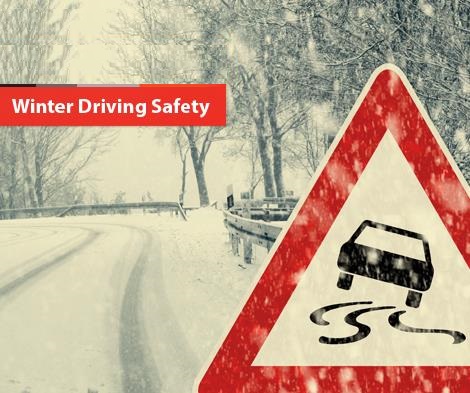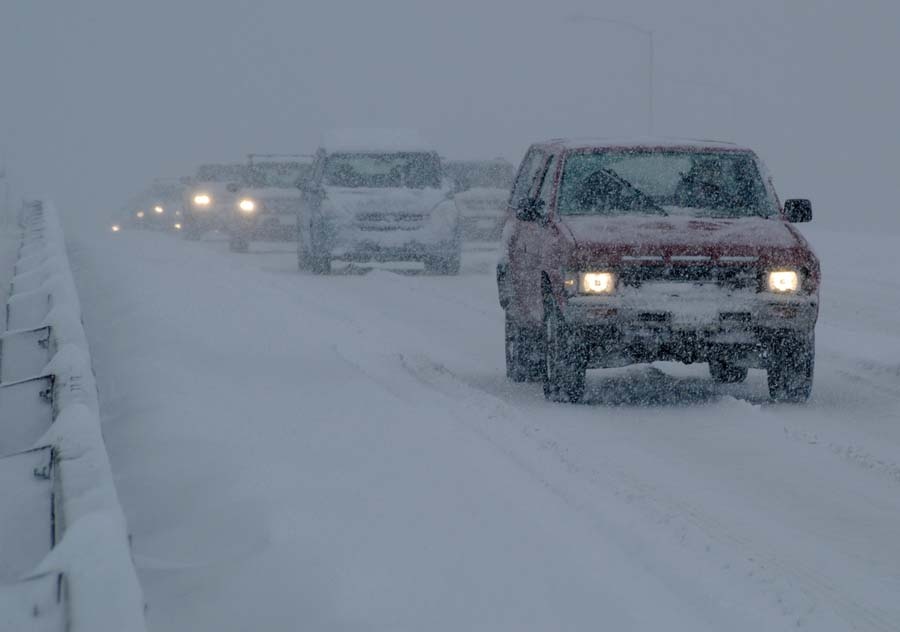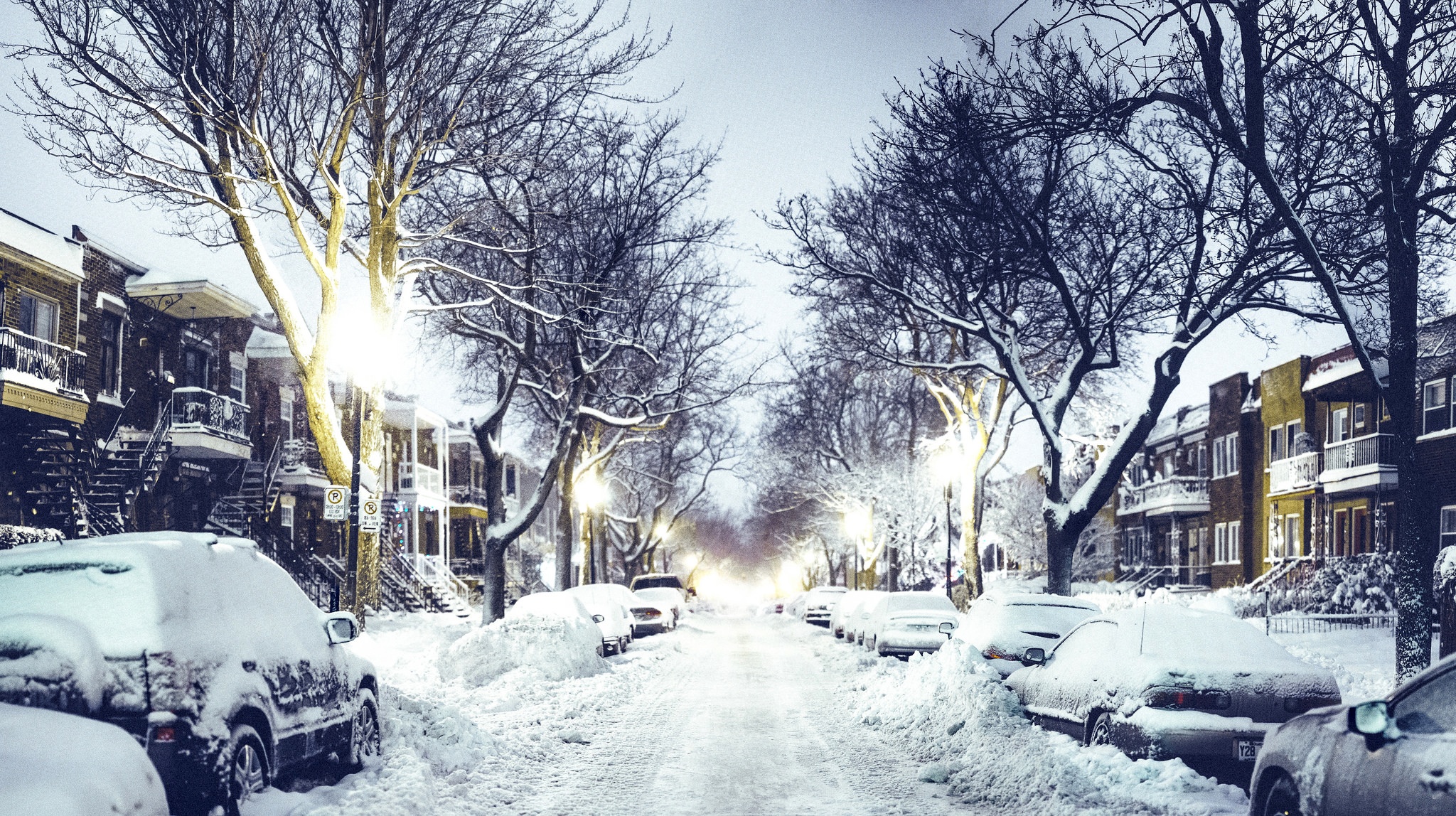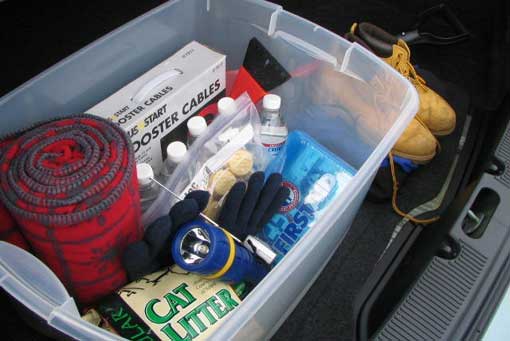

Snow makes any commute harder, but the best way to stay safe on the road while it’s snowing is to avoid driving altogether. However, if you can’t stay home until the plows have cleared the roads, we urge you to take a minute and refresh your memory with these following safety tips:
- Clear snow and ice from all windows and lights. It’s not just good sense, it’s also safe and the law.
- Remember to warm your car up but only do so after you've made sure the tailpipe is clear. Never leave the vehicle unattended.
- Know the current road conditions. Tune in to current local traffic reports before leaving home.
- Pay attention. Remember that the posted speed limits are for dry pavement.
- Leave plenty of room for stopping. Roads may be slippery, even if crews have spread salt.
- Use brakes carefully. Break early, brake correctly. It takes more time and distance to stop in adverse conditions.
- Watch for slippery bridge decks. Even when the rest of the pavement is in good condition. Bridge decks will ice up sooner.
- Don’t use your cruise control in wintry conditions. Remain in control of your car — you don’t want any surprises.
- Don’t get overconfident in your 4×4 vehicle. Remember that your four-wheel drive vehicle may help you get going quicker than other vehicles but it won’t help you stop any faster!
- Don’t pump anti-lock brakes. If your car is equipped with anti-lock brakes, do not pump brakes in attempting to stop. The right way is to “stomp and steer!”
- Remember that trucks are heavier than cars. Trucks take longer to safely respond and come to a complete stop, so avoid cutting quickly in front of them
- Go slow!
For more on keeping safe on the road or what to do before you head out. Keep reading!!
How to Get a Car Out of Snow
Has your car been snowed in, plowed in or otherwise stuck in a snowbank or parking spot on more than one occasion? Then you know how difficult getting it out can be. Here are a few tips, along with some from other sources, on how to get a car out of snow.

Clear the Tailpipe
Before you start your car, make sure the tailpipe is free and clear of snow. A blocked exhaust pipe can lead to a buildup of carbon monoxide.
Clean Your Car
If your car was plowed in after a snowfall, chances are your car is also covered in snow. Before you do anything to free your vehicle, make sure to remove all ice and snow from it.
Dig Away What You Can
If your winter car emergency kit includes a shovel, put it to work! Clear the snow and ice away from the area around your tires and make a path for your car out of the snow.
Drive Out
At this point, it’s worth a shot. Make sure you have enough clearance to drive safely out. You may find you have more success with your wheels straight, instead of turned.
Tires slipping? Add Salt or Kitty Litter
Or any other material that might provide traction, like sand. Could be a good idea to carry a small jar of salt or litter in your trunk during the winter months.
Traction Devices
This tip requires from advance preparation on your part. There are some nifty gadgets out there that may help if snow and ice have immobilized your car. Snow socks and ZipGrips are just a few devices available. Make sure to follow all instructions for using these products.
Last Resort
If you’re trying to drive out (not reverse out), place your floor mats, treads down, underneath and in front if the tires that are slipping. However, the floor mat can shoot out from the tire and be very dirty afterward.
7 Essentials For Your Winter Car Emergency Kit

Here are seven essentials for your winter car emergency kit:
Snacks
Chances are low that you’ll be stranded for more than a day due to a blizzard, but a handful of energy bars and drinks don’t take up much space. If you often travel with pets, don’t forget their snacks, too.
Blankets
Pack thick blankets and hand/foot warmers. These will help to keep you warm without running the engine and running out of fuel should you be stuck in a blizzard or a major traffic jam.
Windshield De-Icer
It’s always a good idea to keep an extra bottle handy. You definitely don’t want to run out when the weather turns nasty and the temperature drops. Plus, this stuff can be used to melt ice on a road or a frozen part of your car, like door handles, in an emergency.
Snow Socks
These aren’t socks for you. They’re for your car. A temporary alternative to snow chains, snow socks are fabric doughnuts that fit over the drive tires of your car. They can muster enough grip to get you up a slippery hill. Alternatively, check out ZipGrips. These are heavy-duty zip ties that strap right onto your tires and dig into snow and ice with traction cleats.
Flares or LED Lights
LED lights are all the rage nowadays. But, don’t forget to bring a pack of flares, too. Flares generate heat, which prevents snow burying them.
Spare Phone Charger
Consider packing a hand-crank charger, as you may be stuck without a power source.
Shovel
Seems obvious right? But unless you’re digging things up during the warmer months, you probably don’t keep one of these in your car on a regular basis. Consider a compact folding shovel, they don’t take up a lot of space but are big enough when digging tires out of the snow.
Remember, it's always better to wait out the storm before you head out on the roads, but if you can't please drive with caution and consider the above tips and tricks to keep you safe.
**Thank you to Plymouth Rock for the amazing content.

